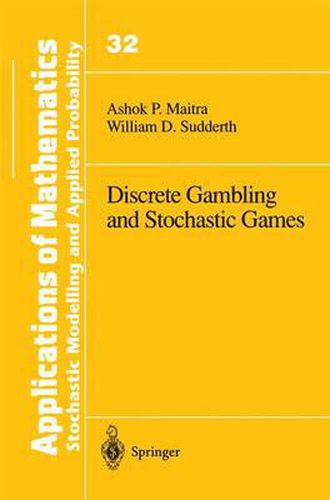Readings Newsletter
Become a Readings Member to make your shopping experience even easier.
Sign in or sign up for free!
You’re not far away from qualifying for FREE standard shipping within Australia
You’ve qualified for FREE standard shipping within Australia
The cart is loading…






This title is printed to order. This book may have been self-published. If so, we cannot guarantee the quality of the content. In the main most books will have gone through the editing process however some may not. We therefore suggest that you be aware of this before ordering this book. If in doubt check either the author or publisher’s details as we are unable to accept any returns unless they are faulty. Please contact us if you have any questions.
The theory of probability began in the seventeenth century with attempts to calculate the odds of winning in certain games of change. However, it was not until the middle of the twentieth century that mathematicians developed general techniques for maximizing the chances of beating a casino or winning against an intelligent opponent. These methods of finding optimal strategies are at the heart of the modern theory of stochastic control and stochastic games. This monograph provides an introduction to the ideas of gambling theory and stochastic games. The first chapters introduce the ideas and notation of gambling theory. Chapters 3 and 4 consider leavable and nonleavable problems which form the core theory of this subject. Chapters 5, 6, and 7 cover stationary strategies, approximate gambling problems, and two-person zero-sum stochastic games respectively. Throughout, the authors have included examples and there are problem sets at the end of each chapter.
$9.00 standard shipping within Australia
FREE standard shipping within Australia for orders over $100.00
Express & International shipping calculated at checkout
This title is printed to order. This book may have been self-published. If so, we cannot guarantee the quality of the content. In the main most books will have gone through the editing process however some may not. We therefore suggest that you be aware of this before ordering this book. If in doubt check either the author or publisher’s details as we are unable to accept any returns unless they are faulty. Please contact us if you have any questions.
The theory of probability began in the seventeenth century with attempts to calculate the odds of winning in certain games of change. However, it was not until the middle of the twentieth century that mathematicians developed general techniques for maximizing the chances of beating a casino or winning against an intelligent opponent. These methods of finding optimal strategies are at the heart of the modern theory of stochastic control and stochastic games. This monograph provides an introduction to the ideas of gambling theory and stochastic games. The first chapters introduce the ideas and notation of gambling theory. Chapters 3 and 4 consider leavable and nonleavable problems which form the core theory of this subject. Chapters 5, 6, and 7 cover stationary strategies, approximate gambling problems, and two-person zero-sum stochastic games respectively. Throughout, the authors have included examples and there are problem sets at the end of each chapter.